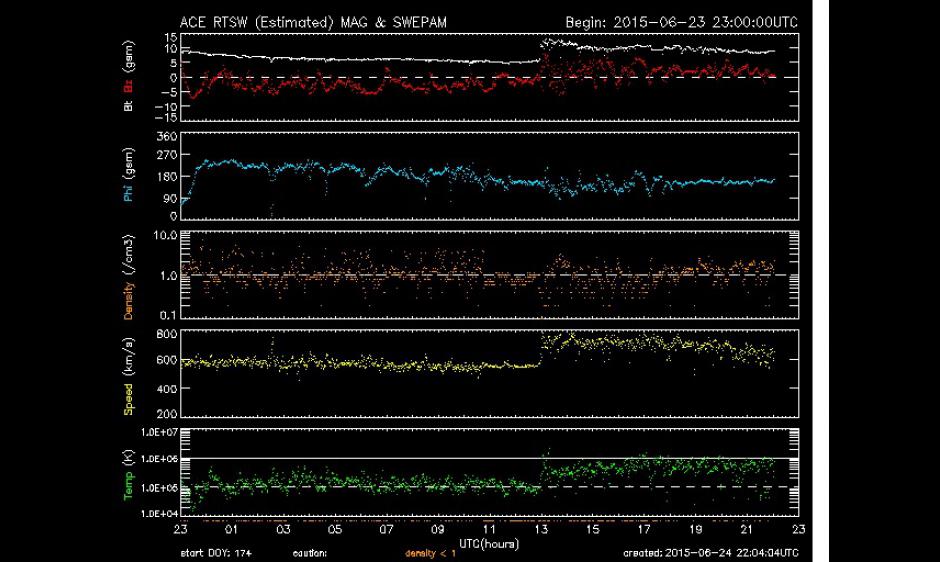
G3 downgraded to G1
The coronal mass ejection (CME) from 22 June appears to have arrived at Earth a bit earlier, and with less magnitude, than expected. Around 1300 UTC (0900 EDT) on 24 June, an increase in solar wind speeds and a slight increase in the magnetic field were observed at the ACE spacecraft. Both are indications of the likely arrival of the anticipated CME. The resulting weak response a short time later from several magnetometers around the world, indicate that we were likely only hit by the edge of the plasma cloud as it passed by Earth. Solar wind speeds are still elevated and Earth's magnetic field is still slightly agitated, keeping at least a slight chance for increased geomagnetic storming as the US moves into night time hours. While still possible, the likelihood for most of the continental US to see the Aurora is not as probable as originally forecast. Geomagnetic activity is expected to continue to subside over the next couple of days.
Stay tuned here for updates.